Tactical Notes: Dogfighting.......... some dos and don'ts |
Taking on the two-seaters....... not just "meat on the table" |
"Then I flew up north, and very soon encountered two Hannovers, whom I fought for some time, but I finally had to leave them, for they were cooperating very well and had started to shoot me about." ........ Major JB McCudden regarding an engagement with a pair of German two-seaters, Flying Fury, p 259. |
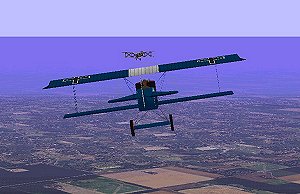
">
">
">
">
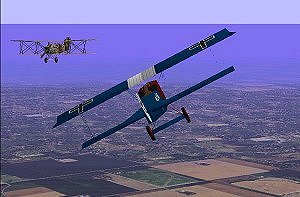
">
">
">
">
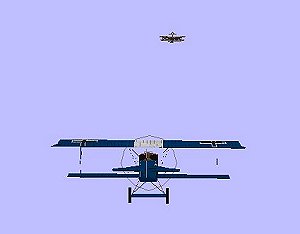
">
">
">
">
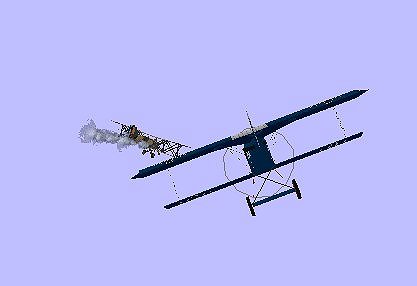
TG2 has made the two-seater a dangerous enemy.... The Right--and Wrong--way to attack a two-seater |
Left and below......... the Front Quarter Approach. The Fokker D.VII approached the Breguet 14 bomber from the front left quarter. This avoided the Breguet's front machinegun and allowed a solid burst into the engine area. Other bombers in the formation are unable to lend support. As the D.VII passed the bomber, the pilot dove at full thottle below to avoid the observer's guns. |
Left and below....... The Underneath Blind Spot Approach. After the frontal pass, the D.VII rolled left in a shallow dive, picking up speed, and then came up below the bomber. With the added speed, the D.VII is able to climb beneath the Breguet and place a solid burst into the bottom of the engine area, or into the wings. With serious damage done, the D.VII pilot quickly closed in and finished the kill, using the climb to bleed off speed and level the burst of his guns. |
">
">
">
">
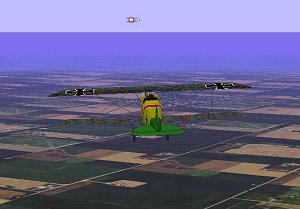
">
">
">
">
">
">
">
">
Left...... The Wrong Method...... an Albatros D.Va making a long, level approach from behind. Although this method allows the Albatros pilot to correct his aim easily, it also allows the rear gunner of the DH-4 to engage him (the bright flash is the observer firing). The Albatros suffers to much damage and has to disengage. Furthermore, the DH-4 is fast enough that the German plane has difficulty in pursuit. Needless to say, it is dangerous and foolish to assume two-seaters are "meat on the table." Some of the most famous WW I aces were shot down by such humble machines. |